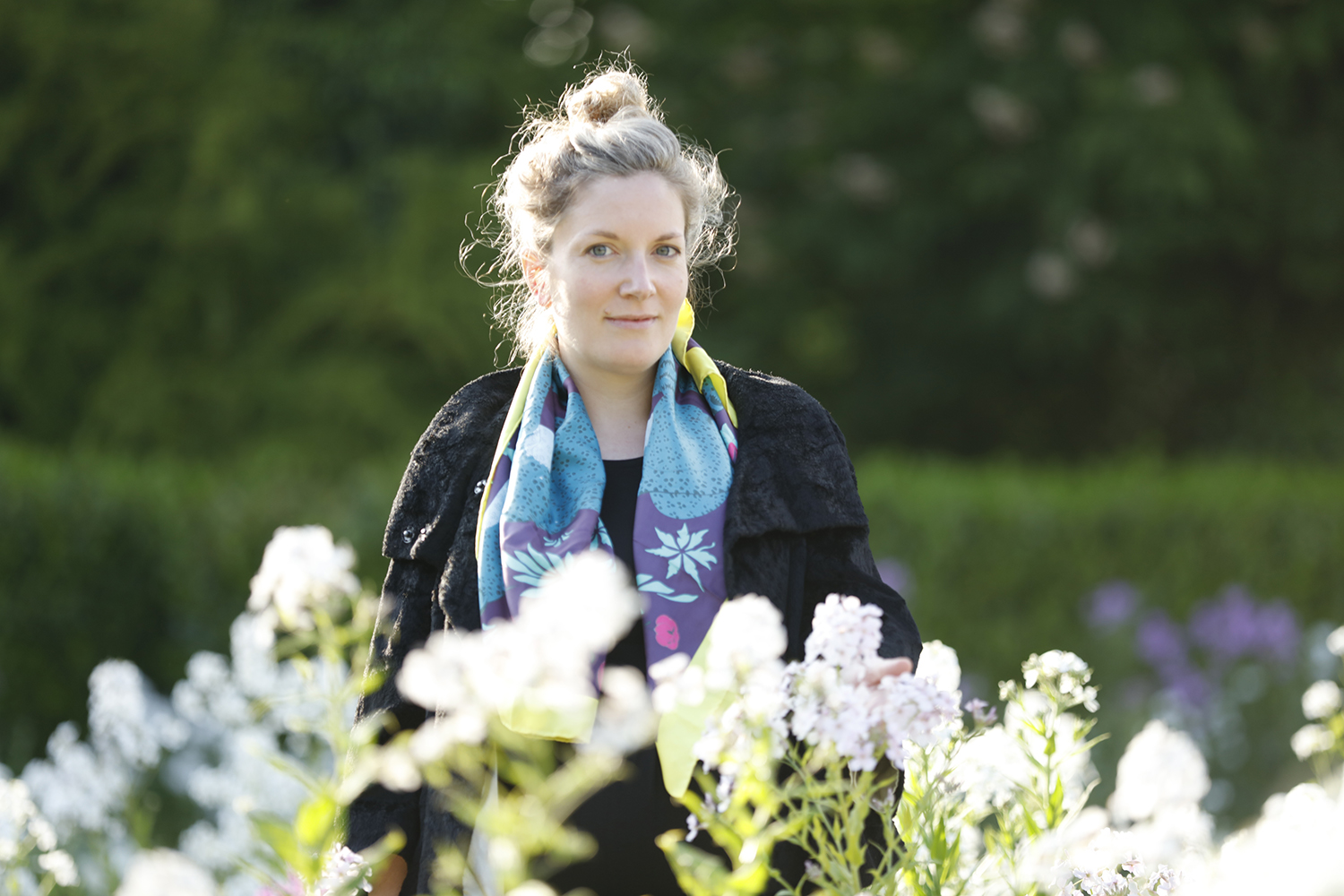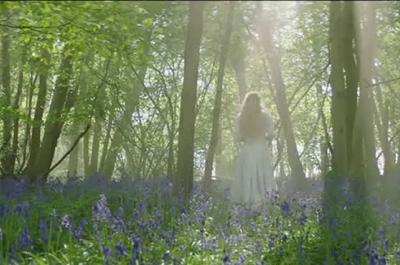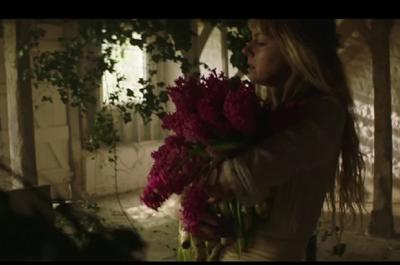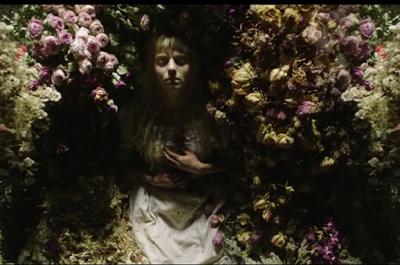THE DEATH OF ALBINE
DOCUMENTARY BY REBECCA LOUISE-LAW

Invited to the Domain in 2017 for a showpiece exhibited under the Stables Canopy, comprising 75,000 flowers suspended by copper wires, Rebecca Louise-Law absolutely had to come back for the 2018 Festival, given that she has just produced a documentary on the death of Albine, a character in Emile Zola’s novel, La Faute de l’Abbé Mouret (The Transgression of Abbé Mouret).
This documentary will be shown throughout the 2018 Garden Festival, in keeping with its literary theme.
“The large bedroom was all ready. Now she could die there. For a moment she remained standing, glancing around her. Pensive, she was looking to see if death was there. And she gathered up the aromatic greenery, the lemon grass, the mint, the verbena, the balm and the fennel; she twisted them, folded them and made them into stops with which to block every little chink and cranny about the door and windows. Then she drew the white, coarsely sewn calico curtains and, without even a sigh, laid herself upon the bed, on the blooms of hyacinths and tuberoses.
One final moment of sensual delight. With her eyes wide open she smiled at the room. Ah, how she had loved in that room! And how happily she was going to die there! At that supreme moment, she saw nothing impure in the plaster cupids, the paintings where women lay sprawling disturbed her no more. She was conscious of nothing beneath the blue ceiling save the intoxicating perfume of the flowers. And it seemed as if this perfume was none other than the smell of old love which had always warmed the room, now increased a hundredfold, until it had become so strong it would surely suffocate her. Perhaps it was the breath of the lady who had died there a century ago. It was now her turn to be delighted by this breath. In perfect stillness, with her hands clasped over her heart, she continued smiling, while she listened to the whispers of the perfumes in her buzzing head. They were singing to her a strange melody of fragrance, which slowly and very gently lulled her to sleep. At first there was a prelude, bright and childlike; her hands, which had just now twisted the aromatic greenery, exhaled the pungency of the pressed herbs, and recalled her girlish ramblings through the wilderness of the Paradou. Then there came a flutelike song of short musky notes, rising from the violets that lay upon the table near the head of the bed; and this flute, trilling melodiously to the soft, regular accompaniment of the lilies on the console table, sang to her of the first joys of love, its first confession, and first kiss beneath the trees of the forest. But her sense of suffocating grew as passion drew nigh with the peppery aroma of the carnations bursting upon her, their brazen notes for a moment drowning out all others. She thought she was going to die in the sickly phrase of the marigolds and poppies, which brought to mind the torments of her desires. Then, suddenly, everything grew calm, she breathed more freely, gliding into greater serenity, lulled by a descending scale from the stocks, fading into a delightful hymn from the heliotropes which, with their vanilla-like breath, proclaimed the approach of nuptial bliss. Here and there the four o-clocks gently trilled. Then there was a hush. The roses languidly made their entry. Voices streamed from the ceiling, like a distant choir. It was a chorus of great breadth, to which she listened at first with a slight shiver. Then the choir crescendoed and soon her whole body vibrated with the mighty sounds that burst in waves around her. The nuptials were at hand, the trumpet blasts of the roses announced this dramatic moment. Pressing her hands more closely to her heart, she lay there panting, gasping, dying. She opened her lips for the kiss which was to stifle her, and the hyacinths and tuberoses smelt so redolent that they enveloped her with one last sigh, so deep that the chorus of the roses could be heard no more. Albine died amidst the final gasp of the flowers.” La Faute de l’Abbé Mouret (Abbé Mouret's Transgression), Émile Zola
DESIGNER

A London-based artist who trained at Newcastle University’s School of Arts and Cultures in England, Rebecca Louise Law has worked with natural materials for 17 years, a practice that involves constant exploration of the relationship between nature and humankind. Her work includes philosophical and spiritual aspects: each flower is selected for a particular reason. The copper wire she uses to fix them in place has become her trademark. Colours are chosen and organised with meticulous care.
The artist has exhibited her installations in a wide variety of venues, from galleries to churches: her “The Flower Garden Display’d” project saw her suspending a total of 4,600 flowers from the vaulted ceiling of a church.
“I like to capture and cherish small beautiful natural objects to create artworks that can be observed without the pressure of time. Preserving, appreciating, celebrating and sharing the beauty of the Earth with the world is what motivates me”. Rebecca Louise Law
“The power of Rebecca’s installations lies in their perpetual transmutation. The living flowers move exquisitely through the natural stages of deterioration: they wilt, lose their colour and dry. By leading visitors along this path of deterioration, Rebecca extends the perceived limits of the beauty of flowers, imbuing them with an artistic value that makes them more than mere objects of decoration”. Amanda Krampf, Director of the Chandran Gallery


